
views
Inversion Table Operation

Secure your inversion table on a flat surface. Ensure that all the joints, straps and pivot points are correctly connected. Do this every time you use the table in order to avoid a serious accident. Read your inversion table instructional manual thoroughly before attempting to use the table. It will support your body weight, so it is important that all the steps are done correctly. Make sure you have a friend with you when you use the inversion table for the first time, in case there are problems.
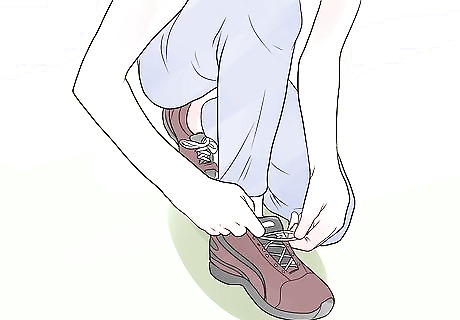
Wear athletic shoes when you use an inversion table. They will give you an extra firm support when the table locks into place. Never use the inversion table with bare feet.
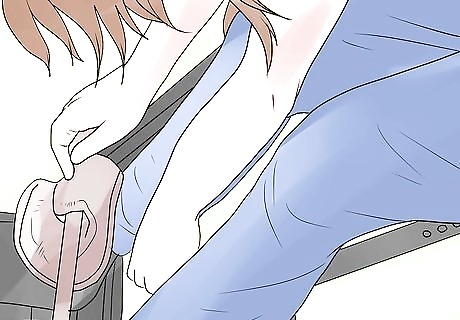
Step into position, with your back toward the table. Raise your feet onto the steps one at a time. Lean forward with a straight back to pull up the lever and lock your feet in place.
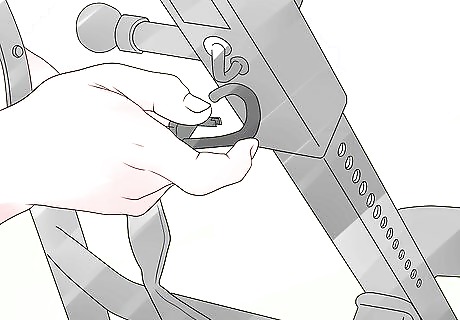
Place the straps over your body. Inversion tables differ in how they secure your body in place. They may have an ankle bar, body strap or other device, so make sure all the safety gears are locked in place before inverting yourself.

Grasp the straps on either side of the table. You will push off these straps to invert your body.

Return to a horizontal position for 1 to 2 minutes when you start to come up from your inversion. This will allow the blood flow to adjust. Slowly return to the starting position before unhooking yourself and getting out.
Inversion Routine for Back Pain
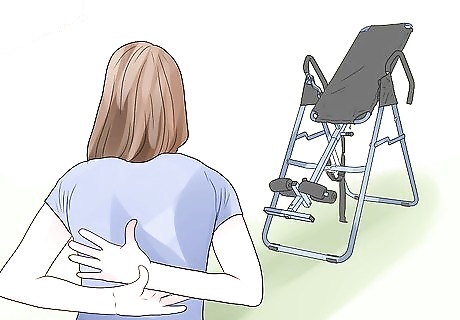
Use an inversion table as part of a treatment program recommended by your doctor. Inversion therapy is rarely used to treat chronic pain, so it is only useful for mild relief. Anti-inflammatory drugs, physical therapy, an exercise routine, epidural injections and even surgery may also be used to treat your condition. Inversion tables only decompress your spine while you're using the table. Once you return to a regular position, gravity pushes everything back together again and creates the same pressure on the nerve.
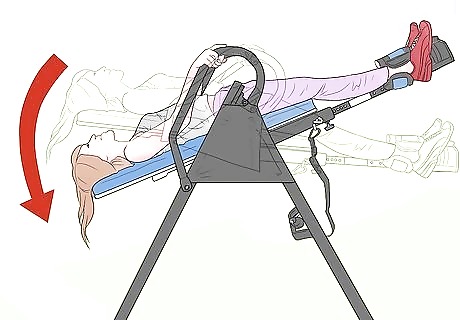
Use gentle movements whenever you use an inversion table. This will keep you from further injury or pain.

Secure yourself in the inversion table. Push back on the handles until you are horizontal. Stay there for one to two minutes to allow your blood flow to change before continuing.
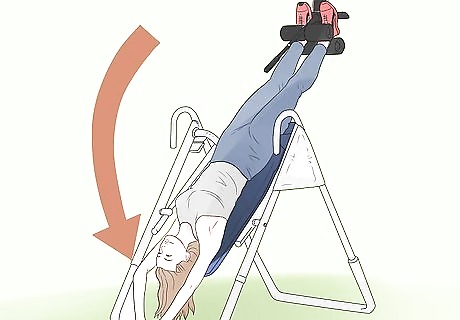
Push back further to a 45 degree angle. Breathe deeply and stay there for one to two minutes.

Raise your hands above your head to create a better environment for spinal traction. You should feel comfortable that you are steady in the table before doing this.
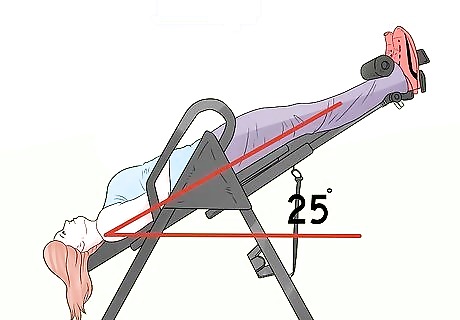
Continue working up to five or more minutes at a 25 degree angle for one week. Try it twice per day to help your body grow accustomed more quickly.
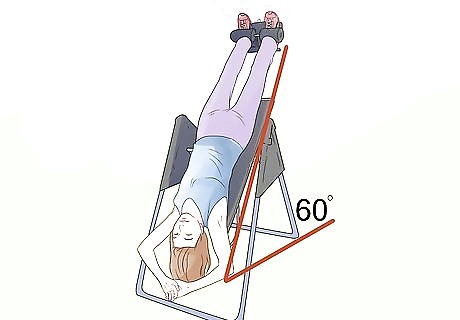
Increase your angle by 10 to 20 degrees per week, until you are comfortable with an angle between 60 and 90 degrees for one to five minutes.
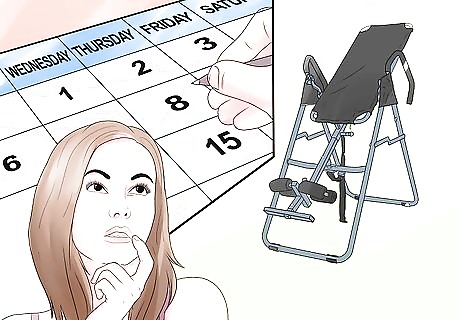
Use the inversion table three or more times per day, or whenever you are feeling intense back pain. Inversion tables will only provide temporary relief, so you may need to do it more often to get a good benefit from it. You do not need to do a full 90 degree inversion. Many people do not invert more than 60 degrees, and others use a 30 degree angle because it is more comfortable and you still see benefits.
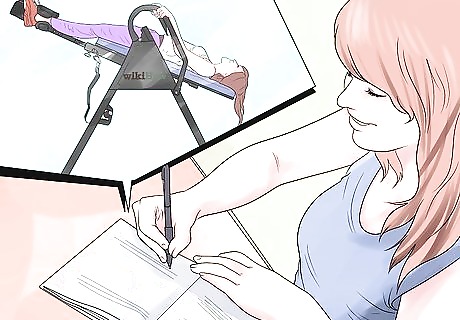
Keep a journal of your pain levels so that you can adjust your routine according to what is working. Choose the angle, time and number of repetitions per day that work best for your condition.



















Comments
0 comment